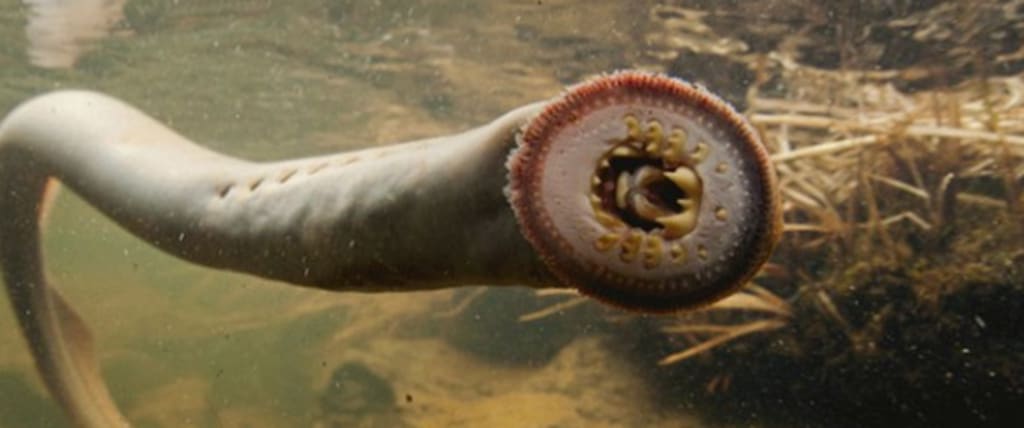Unbelievable Sea Creature: Pacific lamprey
The Pacific lamprey is an ancient eel-like parasite that has managed to survive for over 450 million years. It has no bones and uses its suckermouth to latch onto prey and consume their body fluids. The female lampreys lay up to 200,000 eggs in nests in fresh water and the larvae hatch after 3 to 4 weeks. They then burrow into sediment and stay there for up to a decade before migrating to the Pacific Ocean. Pacific lampreys can travel hundreds of miles inland and are crucial to the freshwater and marine ecosystems. The sea lamprey, on the other hand, is native to the Atlantic Ocean and becomes a threat when it enters the Great Lakes, where it preys on native species. It secretes an enzyme that prevents blood clotting in its victims and can have detrimental effects on local fish populations. Box jellyfish, particularly in the Indo-Pacific region and Northern Australia, are known for their venomous tentacles. Only a few out of around 50 species of box jellyfish have venom that is lethal to humans, but encounters with their tentacles can lead to serious and sometimes fatal consequences. The blue-ringed octopus is another dangerous marine creature that uses its venom to paralyze its prey. It is important to stay away from this creature as there is no known antidote for its venom. Reef stonefish are masters of camouflage and can be found in coral reefs or blending into the seabed. Its venomous sting poses a threat to anyone who accidentally steps on it. These marine creatures demand caution and respect when encountered in their natural environments.

The Pacific lamprey is an ancient eel-like parasite that has managed to survive for over 450 million years. It has no bones and uses its suckermouth to latch onto prey and consume their body fluids. The female lampreys lay up to 200,000 eggs in nests in fresh water and the larvae hatch after 3 to 4 weeks. They then burrow into sediment and stay there for up to a decade before migrating to the Pacific Ocean. Pacific lampreys can travel hundreds of miles inland and are crucial to the freshwater and marine ecosystems.
The sea lamprey, on the other hand, is native to the Atlantic Ocean and becomes a threat when it enters the Great Lakes, where it preys on native species. It secretes an enzyme that prevents blood clotting in its victims and can have detrimental effects on local fish populations.
Box jellyfish, particularly in the Indo-Pacific region and Northern Australia, are known for their venomous tentacles. Only a few out of around 50 species of box jellyfish have venom that is lethal to humans, but encounters with their tentacles can lead to serious and sometimes fatal consequences.
The blue-ringed octopus is another dangerous marine creature that uses its venom to paralyze its prey. It is important to stay away from this creature as there is no known antidote for its venom.
Reef stonefish are masters of camouflage and can be found in coral reefs or blending into the seabed. Its venomous sting poses a threat to anyone who accidentally steps on it.
These marine creatures demand caution and respect when encountered in their natural environments.
About the Creator
Chat-Up
Get ready to dive into an intricate web of intrigue, emotion, and revelation that will keep you turning those pages.
Enjoyed the story? Support the Creator.
Subscribe for free to receive all their stories in your feed.






Comments (1)
A nice piece to read.